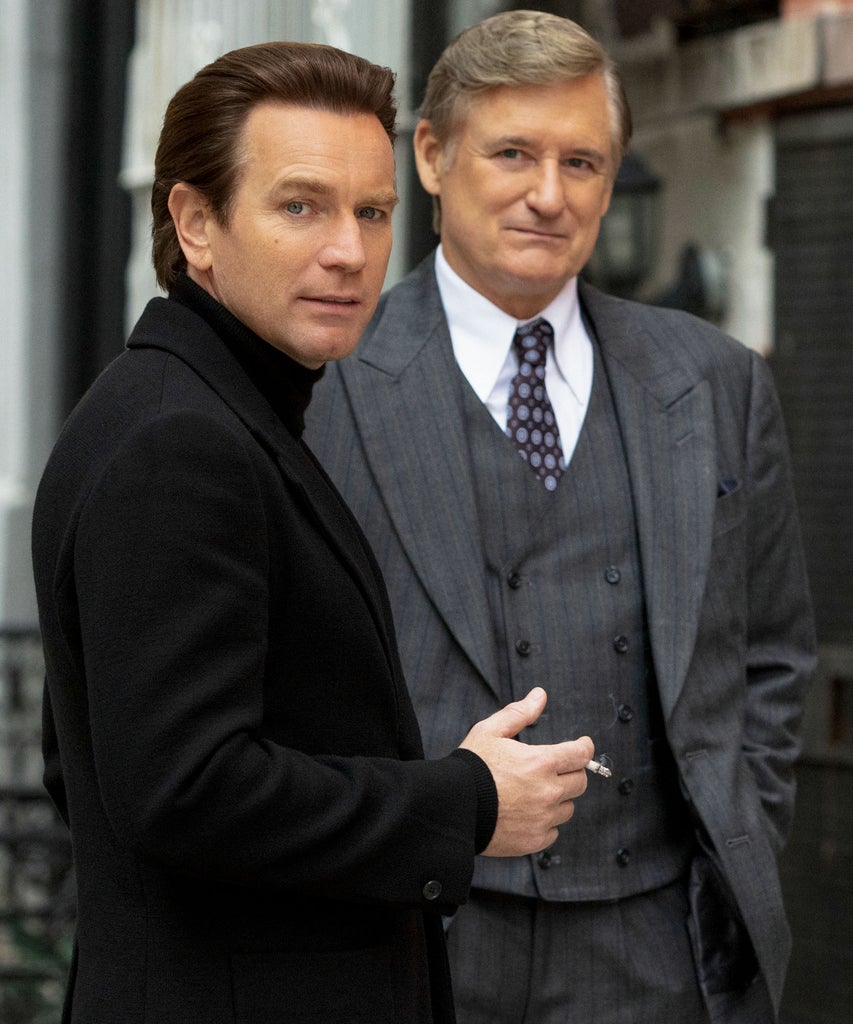
Major spoilers for Halston on Netflix are ahead. Netflix’s Halston is studded with arguments. Fourth episode “The Party’s Over” features the loudest and most upsetting ones, as the series’ titular leading man (Ewan McGregor) destroys the connections most important to him. He antagonizes muse Elsa Peretti (Rebecca Dayan) during a Long Island getaway, forcing her to flee in the middle of lunch. The next time Halston sees Elsa, he screams at her in Studio 54 and tries to rip a fur coat off of her body. Minutes later, Halston calls his illustrator Joe Eula (David Pittu) a “beta” and “an embarrassment,” pushing him to leave the Halston loft near tears.
Yet, none of these raucous moments actually get to the heart of Halston’s habit of self destruction, which is the cornerstone of Halston itself. Instead, that scene arrives quietly in Halston’s finale, “Critics,” and unexpectedly comes from Halston’s forced collaborator John David Ridge (Jack Mikesell). “How dare you?” John yells at Halston. “You are the most talented man I have ever met, and you are throwing it all away.”
These two sentences are the crux of Halston. If the series were at its best, it would aim to solve the inner workings of why someone so gifted would blow up the empire they spent their “whole life working for,” as David says. Halston does not — that is its fatal flaw.
By the time Halston — based on Steven Gaines’ 1991 biography Simply Halston — ends, viewers have witnessed all the chronological steps that led to Halston’s final years (at least according to this ultimately fictionalised series). After unmitigated success in the late ‘60s and ‘70s, Halston becomes the brightest star in American fashion. A benefit show against French designers in Versailles puts him over the top, leading to a multimillion dollar business deal with corporation Norton Simon. Soon enough, Halston is designing everything from carpets to flight attendant uniforms. He is miserable.
The more successful Halston becomes, the more intent he is to burn his life down and wreck any working relationship, whether it be business or personal. When “Critics” ends, Halston has quit his own namesake company due to dissatisfaction with mounting soulless licensing deals, his own substance abuse battles, and exhaustion from a secret AIDS diagnosis. An abrupt conversation with Halston’s lawyer Nick (Juri Henley-Cohn) informs viewers that, at some point off-screen, Halston “gave away all his leverage” with Norton Simon by spilling the details of their legal proceedings to the press. Halston is left taking a deal “a hundred times worse” than what was initially on the table. “I know, I went off the deep end,” Halston demures.
But, the series is uninterested in exploring the emotional reality that drove Halston into such a classically masochistic action, or why he was so deeply unhappy in the first place. As his successful Martha Graham costumes prove later in the episode, Halston’s terror over his failing health has not zapped him of his creativity or sense. So why ruin the exit deal?

Certain passing moments attempt to suggest insecurity may be the root cause of Halston’s worst behaviour. Second episode “Versailles” follows Halston as he attempts to avoid its central fashion competition — against storied fashion designers like Yves Saint Laurent and Hubert de Givenchy — at all costs. When Halston’s show appears destined to flop in front of the world, he hides in a getaway car to the airport, skittish and smoking. Best friend Liza Minnelli (Krysta Rodriguez) is the only person who can coax Halston out of the vehicle and back into the game. This same fear of rejection plays out over the finale with Halston’s relationship with bad reviews — they are a phobia and obsession in one.
While Halston occasionally nods to its hero’s possible self doubt, it also heavily leans on his bubbling bravado for its flashier moments. Halston is also shown to be someone who bets $50,000 (£35,000) on their own unconventional perfume idea and builds a design house from nothing. This is someone who believes in themselves. If Halston wants us to truly imagine someone this ambitious would let their life’s work flounder as it does over Halston’s five episodes, it needs to deeply invest in the darkest parts of his emotional world. We need to hear Halston spill the specific needling details of his inner monologue to a loved one — beyond the basic and rushed “Versailles” car conversation— or know more about who Halston was before life as a monymous trendsetter. Even flashbacks to Halston’s childhood, during which he witnessed his mother’s continued abuse by his father, are intended to explain his dedication to beauty as a salve for all things — not his current emotional predicaments.
Terrible things just happen in Halston, as the designer skips work, snorts cocaine, and insults his closest confidants. There is little psychological explanation for the increasing havoc around the fashion brand other than “That’s just Halston!”
One of Halston’s biggest themes is the suggestion that its protagonist was so caught up in evoking beauty during every second, he never allowed anyone — save for maybe Liza Minnelli — to get to know the real him. It feels as though Halston doesn’t know the real Halston either.
Like what you see? How about some more R29 goodness, right here?
The “Mank” Cast Vs. The Real People